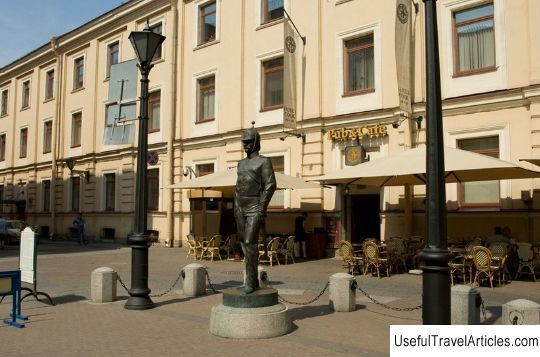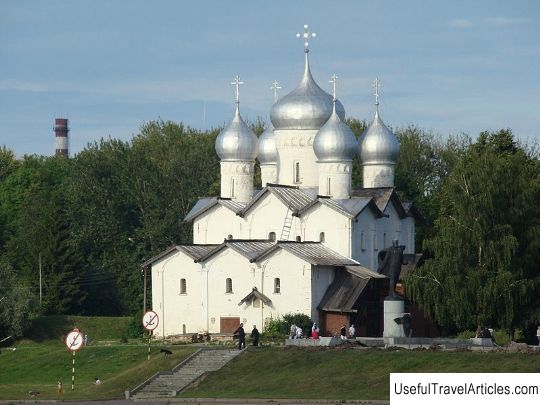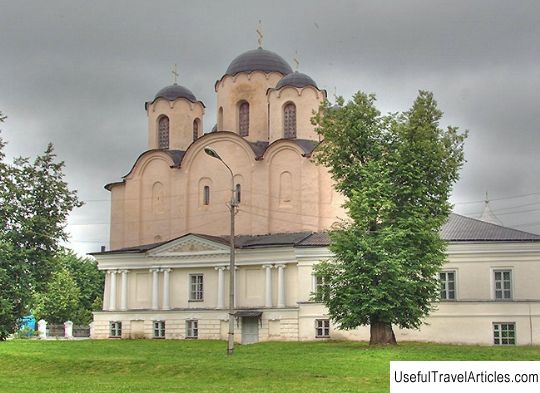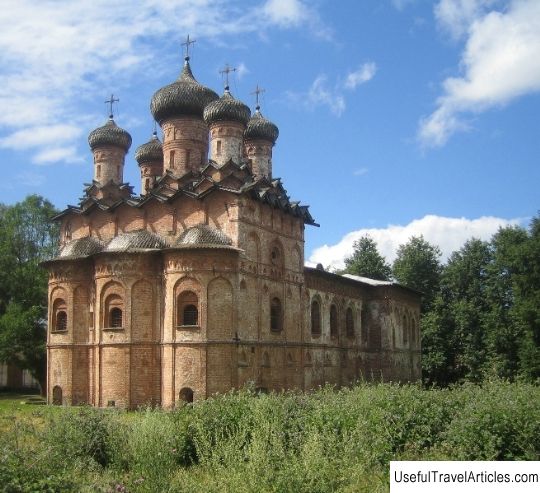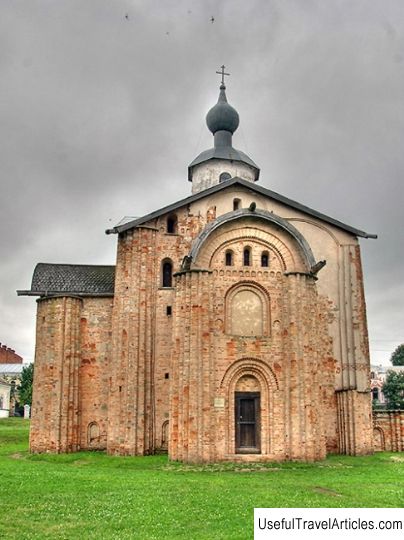Rurik's settlement description and photos - Russia - North-West: Veliky Novgorod
Rating: 9,4/10 (1478 votes) 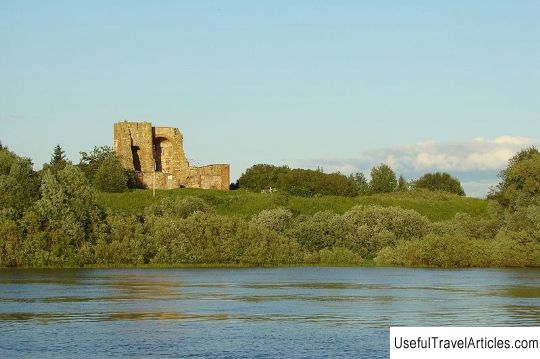
Rurik's settlement description and photos - Russia - North-West: Veliky Novgorod. Detailed information about the attraction. Description, photos and a map showing the nearest significant objects. Photo and descriptionNot far from the center of Novgorod (2 km), at the source of the Volkhov River, there is the Rurikovo Settlement - a historical monument of the ninth century. It is known as the residence of the Novgorod princes. Initially, the building was called the Settlement. This name is literally translated from Old Slavic as "the place where the city was." They began to associate him with the name of Prince Rurik only from the nineteenth century, this is due to the interpretation of the ancient Russian chronicle of the XII century, called the "Tale of Bygone Years." There are several interpretations of this document. According to one of them, in 862, the Novgorodians called on Rurik to rule on their land. And from that time on, a residence was built on the land of Novgorod, where the prince and his squad lived. It was a fortress settlement at the source of the Volkhov on the Baltic-Volga trade route or, by its other name, on the way `` from the Varangians to the Greeks. '' The location of the building was very advantageous, since from a high hill one could see nearby territories, and it was also possible to follow the ships passing from Volkhov to Lake Ilmen. The population was engaged in various crafts, as evidenced by the results of excavations. Crystal, glass and carnelian beads, bronze pendants decorated with runic symbols were found. In addition to jewelry, archaeologists found armor and weapons of the Varangians, scales, grivnas with Thor's hammers, a lot of coins (Arab, Western European and Byzantine), as well as a birch bark letter, which is a letter from several brothers to their parents. This letter mentions the name of Prince Rurik. The first excavations in this area were made only at the beginning of the twentieth century. Towards the middle of the century, a systematic study of this place began. In the course of the work done, traces of a Neolithic site of 2-3 millennia BC and an early Iron Age settlement were discovered. The very first fortress of the Gorodishche was built in the 7th century by the Ilmenian Slovenes. By the 9th century, the fortress expanded. There are wooden buildings inside. The fortress was reliably fortified with a rampart and a moat. There was a pagan sanctuary in front of the prince's residence. Throughout the history of the Settlement, six churches, both stone and wooden, were built on its territory. They were rebuilt and restored several times. In the tenth century, a new settlement appeared near the Settlement, which later became the new economic center of Priilmenye. And by the beginning of the 11th century, the intensity of life was gradually decreasing in the Gorodishche, only the residence of the princes remained here. This place is also very famous for the fact that it is associated with the names of many historical figures. It was here that Alexander Nevsky grew up. For some time, they stayed or lived here: Dmitry Donskoy, Vasily the Dark, Ivan III, Ivan the Terrible. At the beginning of the twelfth century, the Annunciation Cathedral was erected here, by order of the Novgorod prince Mstislav. The construction took place under the leadership of the first Russian architect - master Peter, in 1103. A little later, another temple is being built, on the other bank of the Volkhov, identical to the Annunciation Cathedral in its layout, the shape of the pillars and stairs. This is the St. George Cathedral in the Yuryev Monastery. Thus, the two temples together represented a majestic front passage at the entrance to the city from Lake Ilmen. This spectacle was indescribable in its beauty and grandeur. Also, on the territory of the fortress, 6 more churches, both stone and wooden, were built in different periods. These were churches: St. Nicholas, the Annunciation of the Most Holy Theotokos, the Presentation of the Virgin, St. Cosmas and Damian, St. George, Archangel Michael. Not far from the Settlement, the Church of the Transfiguration of the Savior on Nereditsa was built by order of Prince Yaroslav in 1198. Already at the end of the 16th century, this place lost its significance as a royal residence, and Peter I granted it to Prince Menshikov. The settlement is an ancient and very interesting monument that attracts the attention of everyone who is interested in the history of our country. And despite the fact that now it is a small hill with the ruins of an ancient temple, everything here breathes with antiquity and immerses visitors in the ancient era. The Rurik settlement is becoming one of the most interesting historical sites for scientists and tourists, as well as an attractive place for recreation as a beautiful corner of nature.         We also recommend reading Nature reserve ”Birch Islands” description and photo - Russia - Leningrad region: Vyborgsky district Topic: Rurik's settlement description and photos - Russia - North-West: Veliky Novgorod. |
